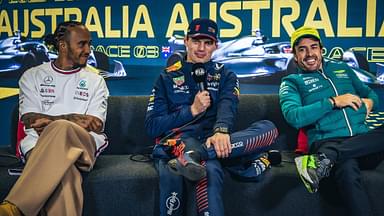McLaren’s performance gain over the last few races has been a big point of discussion. As the Woking outfit are gaining on Red Bull in the constructors’ standings, the intricacies of their car’s performance — be it their qualifying pace, tire wear, race pace — are coming under the radar. The Race’s Mark Hughes analyzed the same and gave reasons why McLaren have better pace in the races relative to qualifying.
Speaking on The Race F1 podcast, Hughes answered a fan question about this by saying, “I think it’s more to do with the comparative way different cars use the tires. I think the McLaren is at the moment, its current stage of development, is very good on the tire.”
RACE PACE IN SPA 2024
1 – Mercedes: 1:48.010
2 – McLaren: 1:48.036 (+0.026s)
3 – Red Bull: 1:48.182 (+0.172s)
4 – Ferrari: 1:48.271 (+0.261s)
5 – RB: 1:49.108 (+1.098s)
6 – Alpine: 1:49.165 (+1.155s)
7 – Williams: 1:49.419 (+1.409s)
8 – Aston Martin: 1:49.555 (+1.545s)
9 -… pic.twitter.com/ODWTENWrAd— Holiness (@F1BigData) July 28, 2024
He stated that the MCL38 is not as good at getting a new tire-set up to temperature. That is why, their tires don’t degrade as quickly. Hughes added,
“So, its race advantage tends to be bigger than its qualifying advantage. Also you will see that the race advantage increases as the stint gets longer and everybody else’s tires begin to fall off at a faster rate than theirs.”
McLaren not getting pole position every weekend is evidence of their pace deficit in qualifying. And that is not a limitation for the team. As the points are scored in the Grand Prix, the MCL38’s better race pace always puts the team in a good position to recover from an underwhelming qualifying.
Regardless, they will have to improve their qualifying performance to avoid doing the hard yards in races and also on tracks where track position is important. If they can repeat their qualifying performances like in Hungary — a track difficult for overtaking — McLaren can bolster their championship bid.
Although speaking of Hungary, they also need to iron out several other issues like race strategy and execution.
McLaren need to learn from their mistakes in recent races
The Hungarian GP was going to be a flawless 1-2 finish for McLaren, with Oscar Piastri winning his maiden Grand Prix. However, the pit wall fumbled their pit stop sequence, which handed the lead to Lando Norris and messed up the situation further with team orders.
While Norris was hesitant for about 20 laps, he eventually let Piastri by. Still, this exposed McLaren’s vulnerability on the strategy front. Such strategic errors have arguably cost the Woking outfit at least two wins in Montreal and Silverstone.
I’d argue they threw it away at the first stop. And that they’ve thrown away 3 of the last 6 races. With arguably the best overall car in the sport, if they want a shot at their first constructors’ title this millennium, McLaren has to take proactive control of their strategy. https://t.co/YE8hZhWKzp
— Will Buxton (@wbuxtonofficial) July 7, 2024
At the Belgian GP, there was not much they could have done, as they were stuck in a deadlock with Red Bull in the middle of the pack. While Piastri had a distant shot at the win, they played it safe by going for the two-stopper.
However, Norris’ bad race start once again put him out of contention for the win, and in such a situation, the strategy team can’t help it. So, McLaren have multiple aspects to iron out — be it with their drivers’ dynamics, or their race starts and qualifying as well as executing better race strategies. Then only, their challenge for both championships can be successful.







